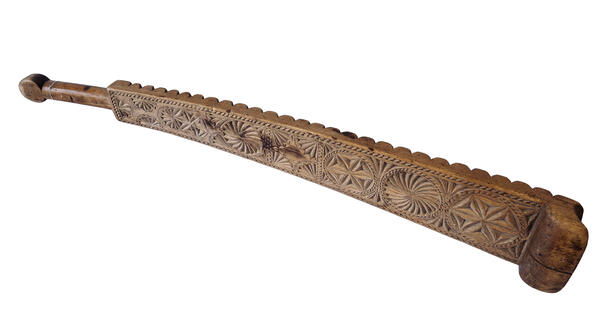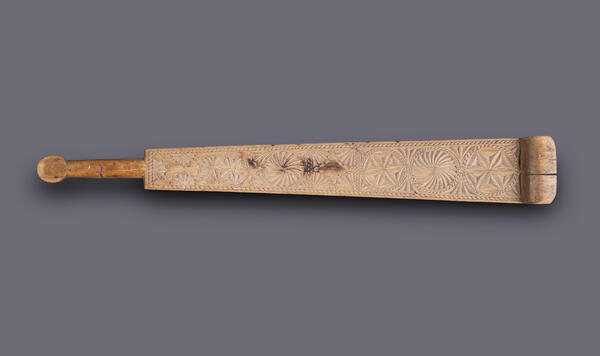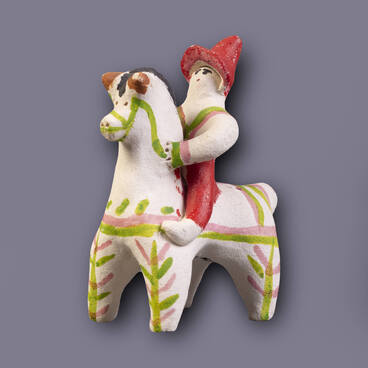A rubel was an ironing tool made of wood. It is often confused with the valyok, which looks very much like a rubel and was used to beat the laundry while washing it. A valyok has a shorter and wider blade, without the ribs typical of a rubel. A rubel is a wooden board with carved cross grooves for rolling the laundry. The laundry, pressed by hand, was wound onto a roller or rolling pin and rolled using the rubel. The laundry was folded several times in narrow strips. The winding had to be very tight and without folds. A housewife would roll the bundle on the table, pressing it firmly with a rubel. This was physically hard work, but the laundry rolled this way was soft and smooth.
Rubels were made in the form of a hardwood board with a handle at one end. The board had transverse rounded grooves on one side, while the other remained smooth and was sometimes decorated with intricate carvings. In different regions rubels could be different in shape or peculiar ornaments. So, in the Vladimir governorate a rubel, decorated with geometrical carving, was unusually long; on the river Mezen a rubel was wide and slightly widened towards the end, and in the Yaroslavl governorate besides geometrical carving a rubel was sometimes decorated with a volumetric sculpture, which, protruding over a carved surface, served at the same time as a very convenient second handle.
The intricate carving on the displayed rubel combines solar signs and geometric ornamentation. The solar signs symbolize wealth, joy and good fortune.
In Starooskolsky uyezd, woodworking crafts were the most widespread ones. They included wheel making, production of sleighs, carts, cooperage, production of distaffs, harrows, combs and rubels. The woodworking industry was concentrated mainly in the villages of Lapygino, Kurskaya, Bor-Anpilovka, Obukhovka and Orlinka. In total 250 homesteads were engaged in this craft. The goods were exported to Kursk, Voronezh and other cities in small batches and sold at fairs.
Rubels were made in the form of a hardwood board with a handle at one end. The board had transverse rounded grooves on one side, while the other remained smooth and was sometimes decorated with intricate carvings. In different regions rubels could be different in shape or peculiar ornaments. So, in the Vladimir governorate a rubel, decorated with geometrical carving, was unusually long; on the river Mezen a rubel was wide and slightly widened towards the end, and in the Yaroslavl governorate besides geometrical carving a rubel was sometimes decorated with a volumetric sculpture, which, protruding over a carved surface, served at the same time as a very convenient second handle.
The intricate carving on the displayed rubel combines solar signs and geometric ornamentation. The solar signs symbolize wealth, joy and good fortune.
In Starooskolsky uyezd, woodworking crafts were the most widespread ones. They included wheel making, production of sleighs, carts, cooperage, production of distaffs, harrows, combs and rubels. The woodworking industry was concentrated mainly in the villages of Lapygino, Kurskaya, Bor-Anpilovka, Obukhovka and Orlinka. In total 250 homesteads were engaged in this craft. The goods were exported to Kursk, Voronezh and other cities in small batches and sold at fairs.





